If you work at a public safety agency conducting drone operations under a COA (Certificate of Authorization) this article is for you.
[In the middle of an emergency and need your TBVLOS waiver right away? Jump down within this article to learn how to have your application expedited.]
At the 2020 Unmanned Aircraft Systems Symposium, the FAA released information about Tactical Beyond Visual Line of Sight (TBVLOS) 91.113(b) waivers for first responders, along with an accompanying guide.
A TBVLOS waiver grants first responders temporary permission to fly BVLOS during extreme emergency situations.
[Related read: What Is a Public Safety Drone?]
Although the focus in many commercial BVLOS use cases is on enhancing efficiency by extending the range of operations beyond the line of sight, the purpose of the TBVLOS waiver is to enhance safety.
In the FAA’s wording, scenarios that call for TBVLOS waivers are unique in that they require flying BVLOS to keep people safe.
Examples of these types of scenarios include:
- Assessing the operational environment at an active structure fire
- Conducting an aerial search on a large roof area for a burglary in progress
- Searching for a missing person by drone over a heavily forested area
- Collecting real-time visual information during an active shooter situation

TBVLOS Operational Limitations
To get a TBVLOS waiver your public safety agency must be conducting its drone operations under a COA. Based on our research, public safety agencies operating only under the Part 107 rules cannot apply for a TBVLOS waiver at this time.
[Related reading: Applying for a Public COA vs. Part 107 Certification for Police and Fire Departments]

The TBVLOS waiver comes with the following operational limitations:
- Even with a TBVLOS waiver, BVLOS operations are to be limited to extreme emergency situations to safeguard human life
- The pilot must return to VLOS operations as soon as possible (i.e., when the emergency is over or whenever the pilot deems practical)
- No flying more than 1,500 feet away from the pilot
- No flying any higher than 50 feet above or greater than 400 feet laterally of the nearest obstacle
Flying at night and in controlled airspace are allowed with a TBVLOS waiver, but only under these conditions:
- You may fly BVLOS in controlled airspace so long as you don’t exceed the UAS Facility Map altitude values, which are a hard ceiling for these operations
- You may fly at night so long as you follow the standard provision Night Small UAS Operations in your COA
- You may also fly at night in controlled airspace so long as you follow the UAS Facility Map altitude values

How to Apply for a TBVLOS Waiver
Before you start the TBVLOS waiver process make sure your public safety agency has a COA. If your public safety agency does not have a COA, you will need to get one in order to be eligible for a TBVLOS waiver.
If your public safety agency is in the middle of an emergency and operates only under the Part 107 rules, you may be able to get temporary permission for operations generally prohibited by the Part 107 rules.
See the Emergency Situations—SGI (Special Government Interest) page on the FAA’s website to learn more, and to apply.
Here is how you apply for a TBVLOS waiver:
1. Send your initial request to the FAA
Email your request to the FAA at [email protected].
The request must include:
- Your concept of operations, including operational area and UAS information, highlighting the required conditions (as described in this resource document from the FAA)
- Your existing Part 91 COA number
This request starts the TBVLOS waiver application process.
2. Submit Your COA Application for a TBVLOS 91.113(b) waiver
Once your concept of operations is approved by the FAA you will be instructed to submit your TBVLOS 91.113(b) waiver application through the COA Application Process system (CAPS).
Here are some important things to know about submitting your TBVLOS waiver application in CAPS:
- Don’t take this step until the FAA approves your concept of operations (Step 1 above)
- Make sure to note that you’re seeking a TBVLOS 91.113(b) waiver in your application
- You can’t operate TBVLOS until the FAA issues you a signed FAA Form 7711-1 (COA/Waiver form)
- A copy of signed FAA Form 7711-1 and a copy of the CAPS Application must be kept as part of any TBVLOS operation and be available for inspection by the FAA
- All pilots should review and abide by the provisions of the issued FAA Form 7711-1 for TBVLOS
If you have questions about the TBVLOS waiver process contact the FAA’s UAS Support Center by calling 844- FLYMYUA or emailing [email protected] or. If you send an email, make sure the subject line is “TBVLOS”.
In the Middle of an Emergency and Need Your Waiver Right Away? Here’s What to Do
The waiver process detailed above is for public safety agencies that are pursuing their TBVLOS waivers in advance of an actual emergency.
If you’re in the middle of an emergency and don’t have time to wait for the regular waiver process, here is what you should do to have your TBVLOS waiver application expedited:
- Fill out the Emergency Operations Request Form found on the FAA’s Special Governmental Interest (SGI) process page
- Send the form to the FAA’s System Operations Support Center (SOSC) at [email protected]
Further reading:
- Learn more about the SGI process here on the FAA’s website.
- Learn about waivers for Emergency Situations in this short guide.
- Learn about how drones are being deployed to the scene of 911 calls in this guide to Drone As First Responder (DFR) programs.

